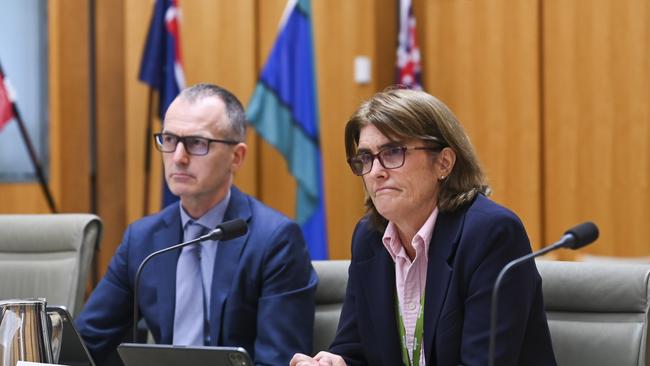RBA learnt valuable lessons from costly funding program: Kent
The RBA’s Term Funding Facility came at a cost of $9bn to the central bank and it has learnt valuable lessons that could help to shape any future program, according to an internal review.

Business
Don't miss out on the headlines from Business. Followed categories will be added to My News.
The Reserve Bank’s $188bn emergency funding facility for banks during the Covid-19 pandemic met its objectives and would be worth considering again if warranted by extreme circumstances.
However, the Term Funding Facility came at a cost of $9bn to the central bank and it has learnt valuable lessons that could help to shape any future program, according to an internal review.
In a speech on Wednesday, RBA assistant governor of Financial Markets, Chris Kent, said the TFF met the objectives the RBA set out for the facility at the start of the pandemic.
“It helped prevent dire economic outcomes at a time when the outlook was bleak and highly uncertain, and there was limited scope for further cuts to the cash rate,” he said.
“The TFF contributed to materially lower lending rates for households and businesses by reducing funding costs directly for banks, and indirectly for other institutions that borrow from wholesale funding markets.
“It kept credit flowing to households and businesses at a time when banks might have otherwise curtailed lending. In helping to prevent a much more severe economic downturn, the TFF also contributed to stronger public sector balance sheets than otherwise.”
Mr Kent said the Board would consider employing such a tool in extreme circumstances when the cash rate target had been lowered to the full extent possible.
But it would do so only after consideration of a wide range of scenarios and the associated risks, and with a broader range of operational options than were available at the time of the pandemic.
In line with recommendations from the Review of the RBA, it has committed to publishing a framework for additional monetary policy tools next year.
“The broader set of lessons learned from the combined use of a range of unconventional monetary policies will be considered as part of that framework,” Kent said.
One lesson learnt by the RBA was that the “flipside to a fixed-rate facility is that it lacked flexibility.”

The fixed-rate option was chosen for the TFF in part to reinforce other policies: the yield target and forward guidance. Such policy packages can be particularly valuable when the standard interest rate lever is already near zero and significant downside risks to the economy remain.
But given the large take up of the TFF at a very low fixed rate, the program “incurred a material financial cost to the RBA” when the economic recovery and pick-up in inflation turned out to be much stronger, and started much earlier than had been expected.
Another lesson was the indirect effects of the program. The effect of the TFF in lowering rates in wholesale funding markets “was much stronger and more pervasive than we had anticipated.”
“The TFF helped to lower funding costs significantly for a range of lenders and corporations that had no access to TFF funds,” Kent said.
“It is hard to identify the specific contribution of the TFF to these lower funding costs separately from the effects of the wider policy package.
“But staff estimates suggest that these indirect effects caused yields on RMBS to be around 50 basis points lower than they would otherwise have been.”
The RBA also learned the importance of collaboration with other government agencies, and regular contact with industry participants. This helped financial stability risks associated with the TFF to be well managed. It included monitoring and managing banks’ refinancing and liquidity needs well ahead of the repayment of their TFF loans, and close monitoring of lending standards by the RBA and the Australian Prudential Regulation Authority helped lower risks from the rise in borrowers’ mortgage payments when their very low fixed rates rolled over to much higher variable rates.
One of the important lessons learnt by the RBA was the value of planning ahead and being ready for a wide range of operational contingencies.
“We got the TFF up and running quickly in part by relying on existing, well-understood practices. But the speed with which the RBA designed and implemented the TFF also limited our ability to fully consider and manage the associated risks,” Kent added.
“Finally, and perhaps most importantly, the Board has agreed to strengthen the way it considers risks, including by examining a wide range of economic scenarios when making policy decisions involving unconventional tools, and how to judge appropriate exit paths from such tools.
“In retrospect, a greater focus on potential upside economic outcomes could have led to a different calibration of the TFF, including deciding not to extend it in September 2020.”
Originally published as RBA learnt valuable lessons from costly funding program: Kent



